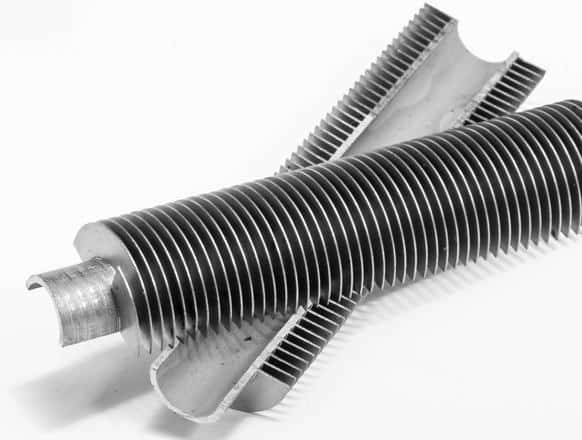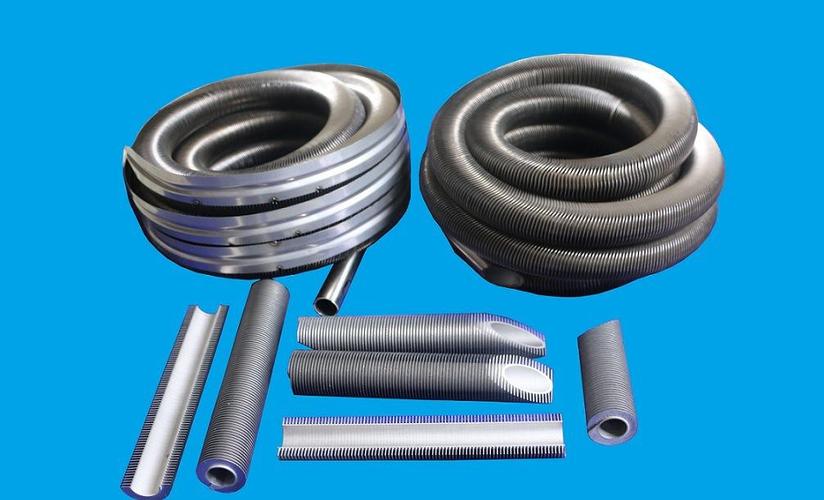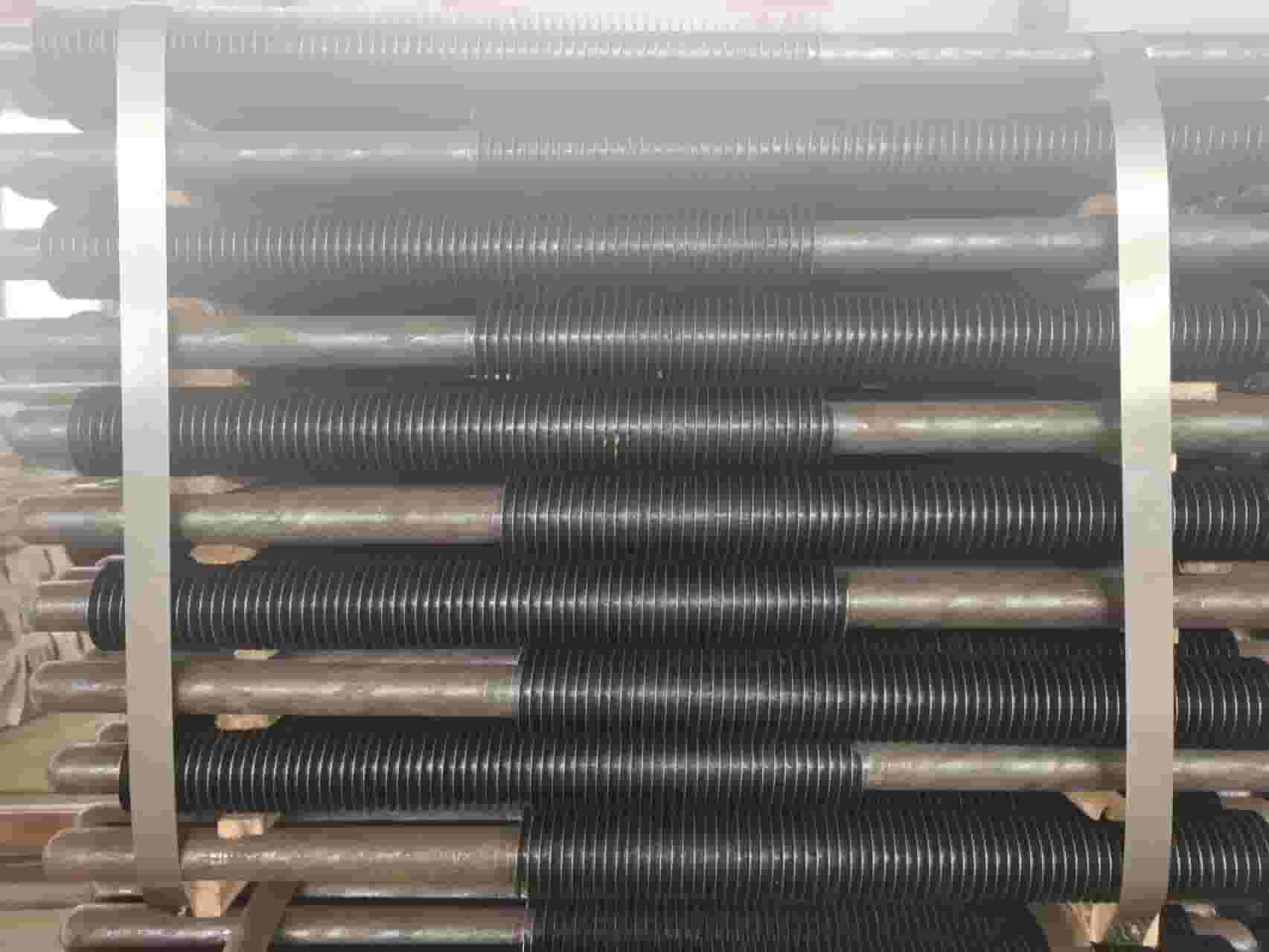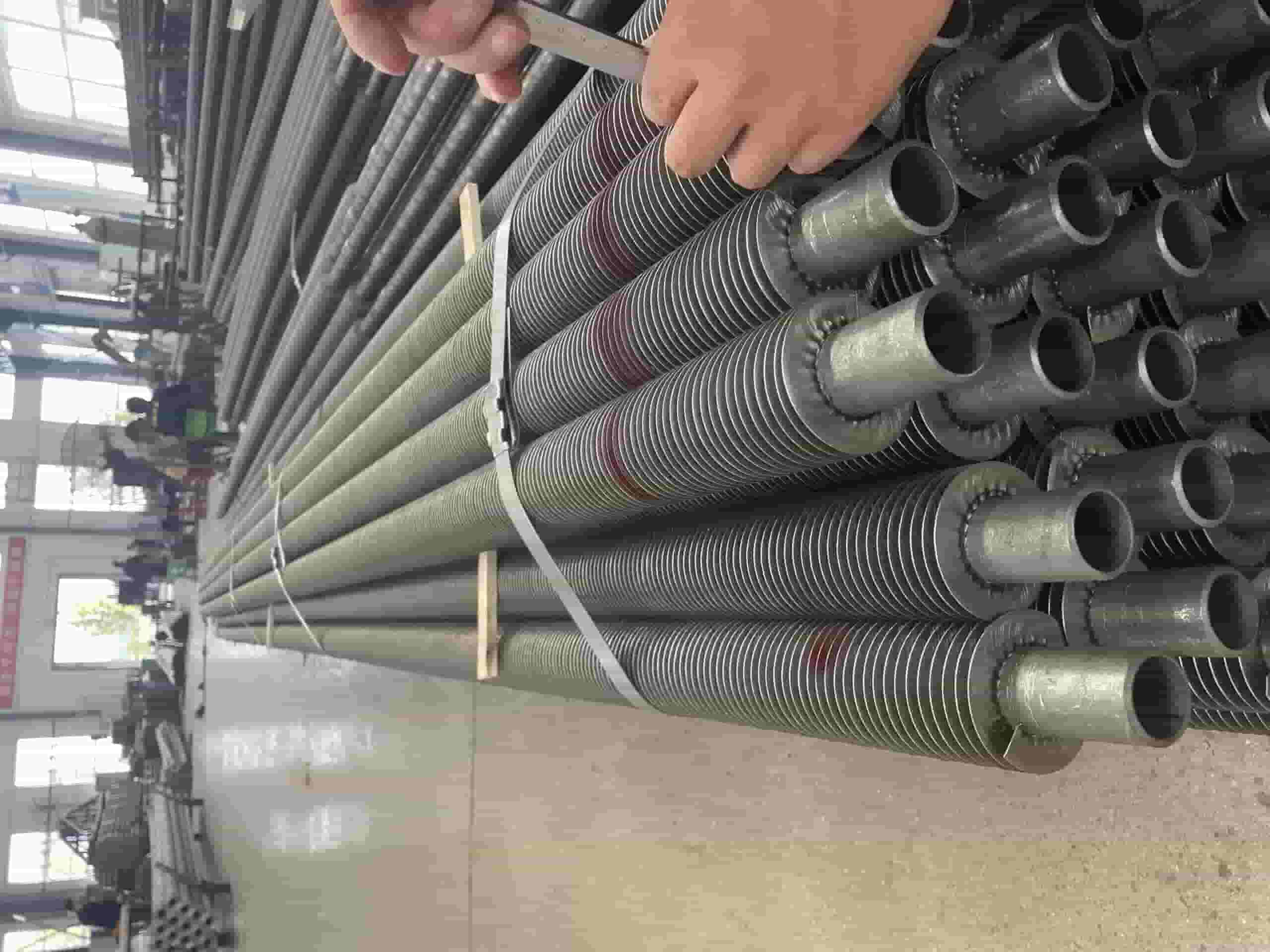What kinds of tight connection methods are there in the finned tube wiring process of the finned tube heat exchanger? How are they closely linked? Next, make a small series to introduce the process of piercing finned tubes.

Resistance welding method:
First apply a layer of flux on the cleaned and polished tube wall, then string the fins on the tube, then connect the power supply at both ends of the finned tube heat exchanger, melt the metal in the flux with a large current, and put The tubes and fins are welded together.
Dip plating method:
The electroplated metals are mainly zinc and tin, followed by cadmium. Before dipping, the tubes and fins must be chemically treated to remove oxides and grease from their surfaces.
Chromium-nickel-molybdenum alloy steel is cleaned with hydrochloric acid, sulfuric acid and oxidizing agents; carbon steel is cleaned with cold hydrochloric acid and hot dilute sulfuric acid solution; copper sheets are only cleaned with dilute sulfuric acid.
The finned tubes of the finned tube heat exchanger are treated with an ammonium chloride solution containing stannous chloride after removing the grease. Can be placed in a molten zinc bath.

Contact welding:
Use the corresponding welding machine and seam welding machine to weld the fins to the pipe, and thread the pipe fittings at the same time.
In order to avoid deformation of the pipe during the welding process, it is usually necessary to connect the mandrel. With this process, the perforated portion of the fin is usually folded and welded.
Expansion method:
Connect the finned tubes of the finned tube heat exchanger to the corresponding booster equipment, and expand the tube channel by hydraulic method, so that the finned tubes of the finned tube heat exchanger are tightly clamped on the tubes.

Finned tubes have their uniqueness, but in order to obtain better results, they can only be selected reasonably. Different occasions choose different finned tubes and adopt different installation methods to promote their functions. Some experience in this area can be shared with you, hoping to help.
If the heat transfer coefficient on both sides of the finned tube has a large difference, fins need to be installed on the side with the smaller heat transfer coefficient to achieve balance.
Therefore, the side with the small heat transfer coefficient should be placed outside the tube as far as possible during design to facilitate later installation operations.
If the heat transfer coefficient on both sides is not high, only side plates can be installed on both sides to enhance heat transfer. However, if the structure is limited, fins may not be added, as long as the two sides are balanced.

In another case, if the heat transfer coefficient on both sides of the tube is large, it is not necessary to use finned tubes.
Of course, in order to further enhance heat transfer, threaded pipes or corrugated pipes can be used instead of light pipes, and the effect is also outstanding.
